
The recently released book The Forgotten Man by Amity Shlaes, is touted as an honest reappraisal of Roosevelt’s New Deal and, while I have not yet read it, I’ll go out on a limb here and state that if Ms. Shlaes attempts to use the Civilian Conservation Corps as an example of how the New Deal failed, she’d better not rely on the likes of other “historians” who’ve argued likewise. For example, she’d be smart avoid relying on Jim Powell for information on the CCC. (Shlaes website: http://www.amityshlaes.com/)
Jim Powell’s flaccid attempt to tar the CCC in his book FDR’s Folly is a good example of revisionist history run amok. As indicated in its subtitle, Powell’s book outlines, “How Roosevelt and his New Deal prolonged the Great Depression.” FDR’s Folly contains only 3 references to the CCC and for all that, Jim Powell would have been better off ignoring the CCC altogether.
Powell’s first reference to the CCC is a somewhat benign statement linking Roosevelt’s policies as governor of New York to his later creation of the CCC. Pretty simple. However, Powell’s other two references to the CCC step carefully across a line to imply something more. Powell notes that the CCC “was one of FDR’s first proposals for relief, offered March 9, 1933.” Then, as if casting about for something negative to say, Powell goes on to state that because labor organizations disliked the $1 a day wage being proposed, “the CCC wasn’t signed into law until March 31.” Okay, so it took 22 days to get the CCC proposal from vision to reality. By today’s standards, when new legislation passes through the House and the Senate at a glacial pace, the legislation creating the CCC was a model of speed and efficiency! Is Jim Powell aware that Roosevelt’s first 100 days are the standard by which all other administrations have been judged? Perhaps Mr. Powell thinks it should be the “First 50 Days.”
Mr. Powell then goes on to vaguely outline how the CCC was run, “very much like the army,” with enrollees reporting to “army training camps” before being assigned to companies under “…corresponding army commands.” “The men wore army uniforms, were driven around in army trucks, slept in military-style open barracks and were commanded by regular and reserve military officers as well as civilian CCC officers.”
Clearly Jim Powell is troubled by the military involvement in the CCC. Had he bothered to do some real research into the CCC, Mr. Powell would have learned that in 1933 the average American was easily as reticent about the military’s involvement in the CCC as he seems to be – if not more so. Had Mr. Powell bothered to check, he would have learned that CCC director Robert Fechner attempted to move forward with as little military involvement as possible in 1933, but when it became obvious that he couldn’t meet the enrollment goals set forth by the president, the War Department was called upon to ratchet up their participation to better speed the process of feeding, equipping and transporting the first 250,000 new enrollees. As it turned out, the military effort in connection with the mobilization of the CCC was excellent preparation for our later involvement in a world conflict.
As for army uniforms and army trucks, the uniforms were World War I surplus and in fairly short order the transportation was largely handled by the technical agencies like the U. S. Forest Service, National Park Service and the Soil Conservation Service, with CCC enrollees (not army personnel) doing the driving. And when it comes to active and reserve military commanders, Mr. Powell failed to point out that active duty commanders were replaced with reserve officers, many of whom had been put out of work themselves, so they had more in common with the enrollees than with their active military brethren.
Not content to put a stain on the CCC by implication, Mr. Powell then purports to outline some of the work done by the CCC and the statement is cynical enough to be worth quoting at length:
“The CCC men worked primarily in wilderness areas planting trees, trying to control tree diseases, and building fire towers and truck trails that might be used for fighting forest fires…CCC officials claimed they imparted useful skills like reading. The CCC was expensive, costing over $2 billion between 1933 and 1939, and a disproportionate amount of money went to western states.” (Emphasis added.)
So in Mr. Powell’s assessment the CCC tried to control tree diseases (where no meaningful effort had been made previously) and they constructed improvements that might be used for fighting forest fires. Furthermore, officials “claimed” that the program imparted useful skills, “like reading.” I’ll assume that Mr. Powell does in fact believe reading to be a useful skill. Again, had he bothered to look at some facts, Mr. Powell would have learned that in addition to reading, enrollees learned valuable work skills and discipline that they carried with them the rest of their lives. Many enrollees would go on to have life-long employment based upon skills they gained in the CCC. As for the question of whether or not the work of the CCC was useful in fighting forest fires, the statistics show a marked decline in the occurrence of forest fires during the years that the CCC was in operation and many of their forest roads are still in use today. Dozens of CCC enrollees died while fighting forest fires; a fact that Mr. Powell apparently failed to dig up in his very limited research.
Mr. Powell closes the statement by claiming a disproportionate distribution of CCC funds. The claim is vague enough that it will escape scrutiny by most readers. What does Mr. Powell mean when he refers to “money” that went disproportionately to western states. If a larger amount of funds for CCC work went to western states, it’s because a larger chunk of the public domain is in the west. If Mr. Powell takes enrollee allotments into consideration, then he’s way off the mark. While a majority of the physical and aesthetic improvements took place in western states, a good number of enrollees came from large eastern cities. These enrollees were required to send as much as $25 of their $30 monthly allotment home to their families back east. If we compare total enrollments by state for fiscal year 1937 for example, we see that 3,863 Coloradoans were enrolled, 1,468 Arizonans were enrolled, and 8,411 Californian were enrolled. By comparison, 16,697 New Yorkers were enrolled, 12,646 Pennsylvanians were enrolled, and 11,973 enrollees hailed from Massachusetts. So, if we talk simply in terms of work done and improvements made, it could be argued that the western United States benefited more from the work of the CCC than did the rest of the country. However, if we consider where the bulk of enrollment took place and thus where the enrollment benefits were going, we’ll see that the eastern states gained their share of benefit from the CCC as well.
Jim Powell’s final comment regarding the CCC involves an “embarrassing” episode involving Henry Ford, who was an ardent opponent of the National Recovery Administration. It seems Mr. Ford refused to sign on to the NRA’s automobile code. Nevertheless, when the CCC ordered 500 trucks, Ford’s bid was $169,000 less than the next lowest bid from Dodge. In the end, Mr. Powell reports, the CCC went with Ford’s lowest bid, and the reader is left to puzzle a bit over what the real scandal was exactly. Again, had Mr. Powell done any meaningful research in connection with the CCC, he would have leaned about the infamous 1933 “toilet kit scandal” and it’s implication of CCC bid-rigging. Furthermore, Mr. Powell doesn’t bother to explain why the CCC accepted bids for trucks if the army was doing all the driving, as he claims in an earlier section of the book.
Admittedly, Jim Powell’s book isn’t about the CCC exclusively, but given the paltry research done to back his claims, Jim Powell would have done well to leave the CCC out of his book. Furthermore, the flimsy arguments Mr. Powell uses to attack the credibility and usefulness of the CCC, call into question the arguments he uses to attack the rest of Roosevelt’s New Deal.
Amity Shlaes’ new book has come out to rave reviews. It will be interesting to see how she addresses the CCC in her appraisal of the New Deal. Frankly, without new, meaningful research to support it, no meaningful case can be made against the New Deal using the CCC as an example. In short: Criticize the New Deal to your heart’s content, but don’t hang your argument on the Civilian Conservation Corps.
(Copyright 2007, Michael Smith)
Monday, July 30, 2007
The Folly of Revisionist History
Posted by
Michael
at
7:58 PM
![]()
Labels: Amity Shlaes, Criticism, Editorial, Jim Powell, Revisionist
Subscribe to:
Post Comments (Atom)
Buffalo Crossing Camp, Eastern Arizona
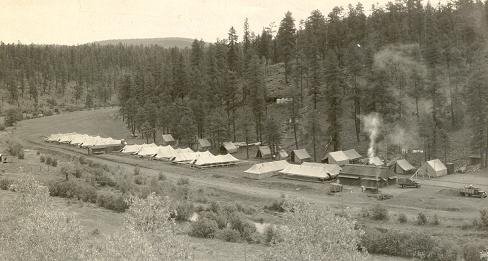
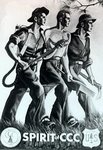
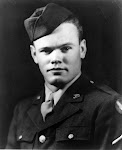





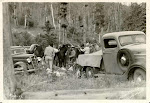
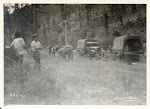


No comments:
Post a Comment